-
Car Reviews
- All reviews
- Midsize SUVs
- Small cars
- Utes
- Small SUVs
- Large SUVs
- Large cars
- Sports SUVs
- Sports cars
- Vans
Latest reviews
- Car News
-
Car Comparisons
Latest comparisons
- Chasing Deals
Lexus’ vastly improved, new-generation RX range offers plenty of choices but can the heavy-drinking non-hybrid RX 350 F Sport ever make sense next to its hybrid stablemates?
The Lexus RX 350 is in danger of being the last kid picked in the playground.
Not because it isn’t any good – far from it – but it lines up beside its hybrid peers with their electric motor boost and dramatically better fuel economy. Much as Toyota’s found, Lexus’ self-charging hybrids are the ones buyers clamour for.
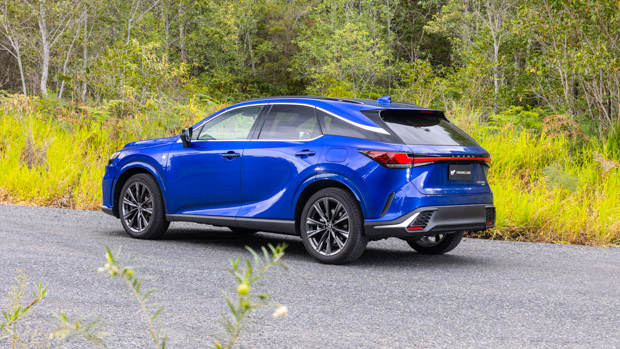
So where does that leave this ‘pure’ hybrid-less RX 350? Lexus launched its new generation RX large SUV – rival to the BMW X5 and Mercedes-Benz GLE – earlier in the year, with the RX 350h and flagship RX 500h variants the hybridised fuel-misers of the range.
At launch, Chasing Cars editor Tom Baker quickly suggested two specifications “easily made the most sense: the entry-level RX 350h Luxury front-wheel drive, and the RX 500h F Sport Performance.”
No love, then, for our test RX 350 F Sport AWD, which sits decidedly mid-range and sans hybridisation. Its feelings understandably in tatters, we’re here to see if this non-hybrid big Lex can plead its case.
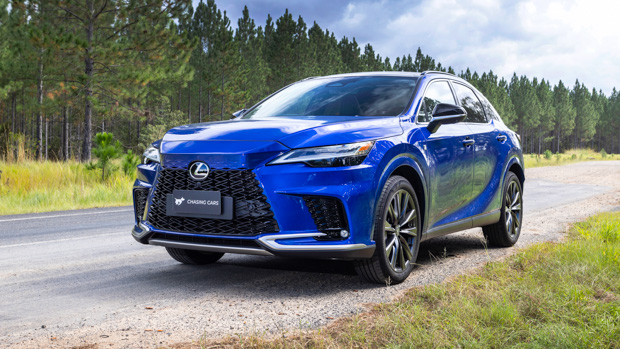
I’ll kick things off. Its turbocharged 2.4-litre petrol four-cylinder offers 205kW and 430Nm, trumping the hybrid’s 184kW (combined) non-turbo 2.5-litre petrol and electric motor combo.
To go with the extra power, the RX 350 uses a torque converter eight-speed auto, rather than the hybrid’s CVT gearbox.
Casual conversation with Lexus dealer folk revealed there are some buyers simply not keen on hybrids.
Many prefer the feel and sound of petrol alone, and some cite fears over replacement battery cost, despite Lexus’ up to ten years/unlimited kilometre warranty and solid evidence these batteries are incredibly durable.
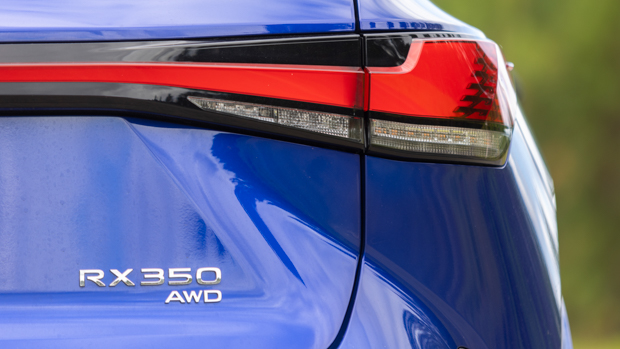
I suggested longer wait times for hybrids may push buyers into a non-hybrid RX 350. Not so, it seems. Anecdotally, you’ll be in line for an RX for around six months – specification depending – no matter if you go hybrid or non.
All this aside, this new gen RX is a handsome fellow. Design is drastically cleaner and more pleasing than before; the old RX’s frightful grille now replaced with something far less polarising.
Slightly wider and longer of wheelbase than before, it doesn’t look cumbersome for a large SUV. That said, and this is a sticking point for many shopping in this segment, there’s no option of a third row of seats in the new RX.
The non-hybrid RX 350 is all-wheel-drive only and comes in F Sport grade (as here) from $99,900 plus on-roads, or Sports Luxury grade from $105,900.
Our F Sport isn’t quite as dripping in luxe, rather it’s the choice of the more enthusiastic driver.
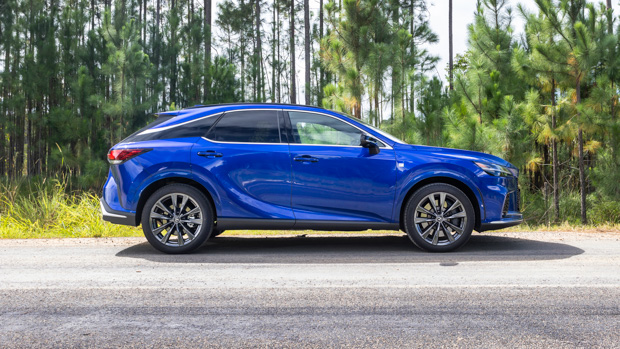
Showing your sporty side, included are 21-inch black F Sport alloys, F Sport-specific bumpers, grille and badges, black roof rails and mirror caps, and larger six-piston front callipers for all you school run late braking escapades.
Inside, your F Sportiness includes leather-accented trim, very sculpted and well-bolstered F Sport front seats, aluminium trim and pedals, white-stitched leather steering wheel and a tiny, dimpled shift knob that’s an ergonomic treat.
The Sports Luxury version, versus our F Sport, has slightly fancier leather, and seats which electrically move a billion ways.
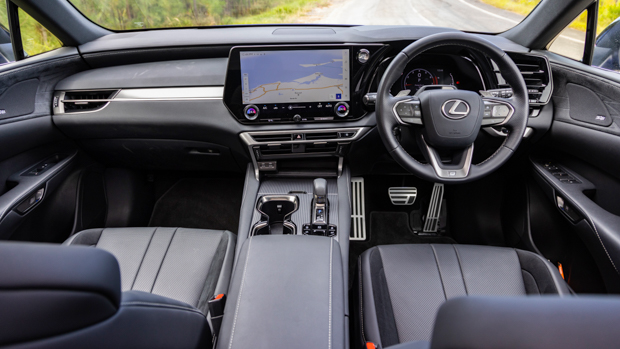
Its rear seats are heated, ventilated and fold electrically, while the steering wheel (with woodgrain ornamentation) also gets the heat treatment.
Lexus has traditionally been generous with RX standard specification, trying to get one-up on those pesky Germans and their desirable large SUVs.
It means even if you buy the entry-level RX 350h Luxury ($87,500 in FWD and $92,000 AWD), you’re very well looked after.
Standard features include:
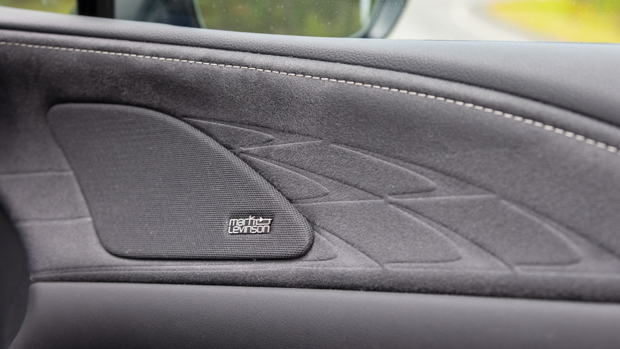
Move up to the RX 350 Sport Luxury model ($105,900 petrol only or $111,900 hybrid), or our RX 350 F Sport, and your other key additions are:
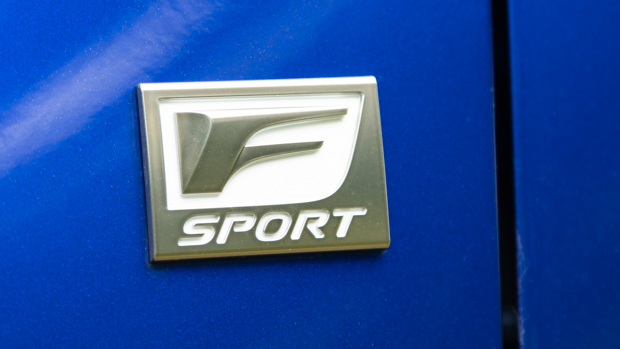
The range-topping RX 500h F Sport Performance ($126,000) has some goodies exclusive to this flagship, including:
A variety of Enhancement Packs across the range allow you to spend more as you see fit.
For our RX 350 F Sport, you can spend $3150 extra for a panoramic sliding roof, or $4305 gets you the roof plus digital rear view mirror, intelligent parking assist and heated steering wheel.
The ‘F’ in F Sport is a nod to Lexus’ high performance ‘F’ models, it in turn a nod to the Fuji racetrack.
Anything branded F Sport supposedly bridges the gap between a true F car and a standard Lexus, but really, it’s mainly a chance to add some trim and accessories to up the sporty sexiness.
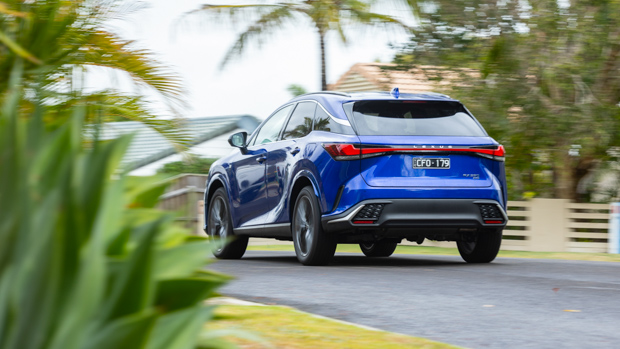
For other money-spinning industry examples, please see BMW’s M Sport and Mercedes’ AMG-Line.
Our F Sport offers the same 205kW/430Nm turbo four-cylinder as the RX 350 Sports Luxury model, and the same 7.6-second 0-100km/h time.
It does have meatier 400mm front brake rotors with six-piston callipers (Sports Luxury grades have only 340mm with two-piston efforts), with fitment possible due to the larger 21-inch alloys.
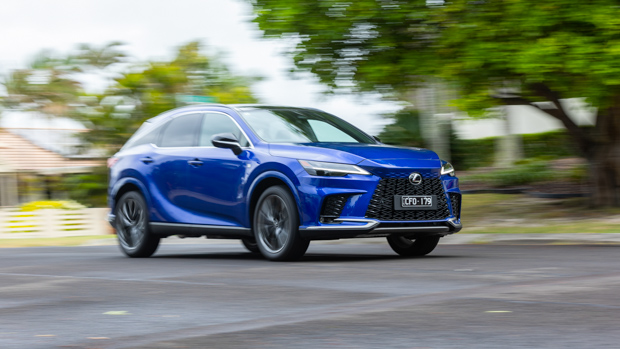
Should Fuji come calling in your 2005kg large SUV, these larger anchors will no doubt last a few extra laps.
Of greater everyday driving use is the adaptive suspension. A custom mode means you can specify damping to suit conditions, and equates to impressive ride versatility.
Lexus has managed to keep things limo-like smooth and soft (without being nauseously so), even on 21-inch wheels and skinny tyres; then in sportiest setting the ride’s firm and controlled, allowing for decent fast cornering control.
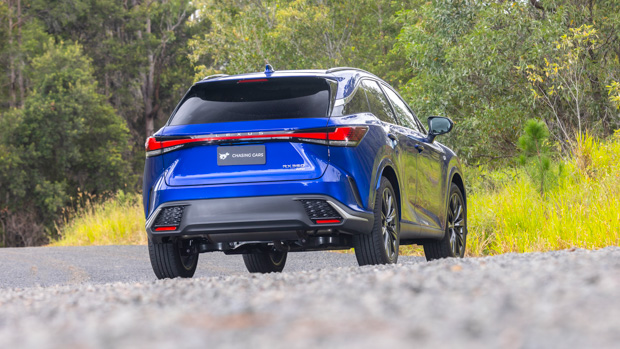
It won’t trouble the best BMW X5 or Porsche Macan, but responsive steering, fair balance and ample engine torque (when you’re in the right gear via paddle shifters) offer a bit of back road fun.
And, despite this Lexus’ size and mass, it doesn’t feel overly cumbersome.
But really, an RX 350 is at its best when playing the plush card. Leave it in comfort and the steering goes a bit lifeless, but it’s just so easy, comfortable and cossetting to pilot.
Bump absorption’s superb and cabin quiet’s exceptional. On a smooth highway this thing’s a superstar – so very settled and refined.
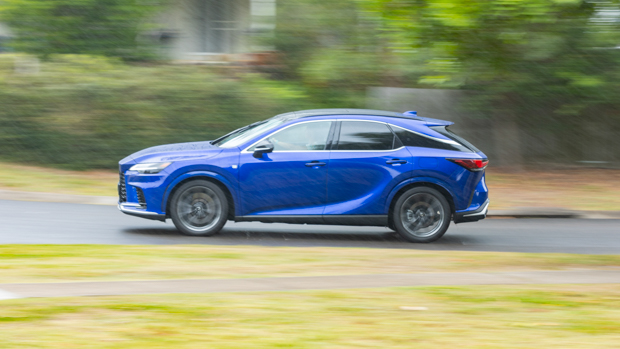
At city speeds the low profile 21-inch rubber occasionally jars and there’s a dash more road noise from them at speed. In isolation there’s much to applaud, but I tested a 19-inch wheeled RX 350h straight afterwards, and its spongier nature better suited this palatial SUV.
Testing this non-hybrid RX 350 F Sport and an RX 350h back-to-back proved enlightening. For this reviewer, the argument a non-hybrid appeals due to a ‘traditional’ owner’s desire for a ‘pure’ petrol engine and non-CVT auto gearbox just doesn’t stack up in the real world.
The hybrid may take 0.3 seconds longer to reach 100km/h, but its electric motor kick seems to fill torque holes, giving a more responsive feel than in the RX 350 F Sport.
This is most apparent for typical everyday driving, where there’s a lot of stop-start, and the CVT’s unfussed smooth nature is a decent partner.
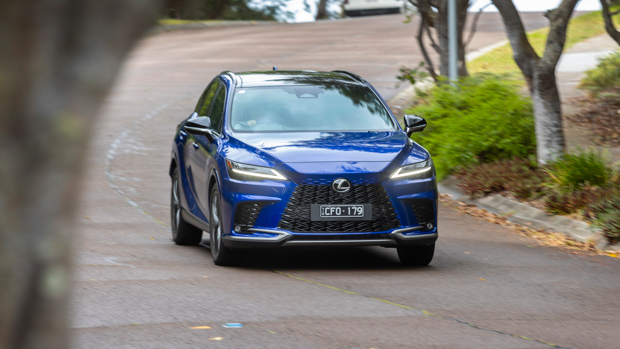
The RX 350 F Sport’s turbo 2.4-litre is no slouch – it feels muscular and gives reassuring pull when up to speed.
The argument to go non-hybrid would be stronger if this car had a V6 (like RXs of old), but the hybrid’s drivability, economy and ability to electric-only cruise in traffic make it a far smarter choice. The hybrid’s resale, too, should eclipse the non-hybrid.
The RX 350 F Sport’s almost a victim of its hybrid cousin’s brilliance. Key would be for potential owners to drive both and make their own decision.
What a dramatic improvement this RX’s cabin is over old. Instead of a stick-on dash-mounted screen, the 14.0-inch integrated widescreen blends neatly into the driver’s display, while Lexus’ daft sensor pad in the centre console is blessedly a thing of the past.
The result is a cabin rich with luxury – as has always been the Lexus way – but combined with an intelligent and user-friendly layout loaded with tech and features.
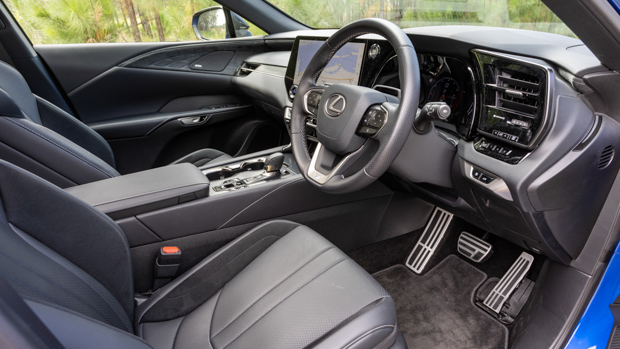
You first experience it when opening the doors. Instead of a handle you pull, there’s a little sensor behind which gracefully and effortlessly has you open the door.
Same when inside. You only need tap a metal button with your thumb and the door pops open – it’s a small but beautifully luxe thing.
I’ve noted a few motoring writers – Clarkson included – express disdain at this technology. I’m perplexed why. You may stuff up once, but soon learn the technique.
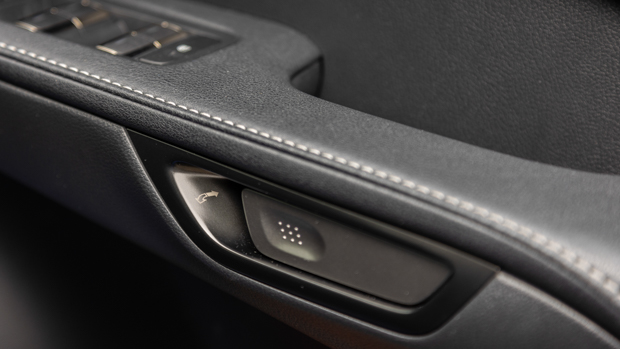
A gentle, subtle press seems perfectly in keeping with luxury cars as far as I’m concerned, my only worry (as with all electrical things) would be if it starts playing up in a few years.
There’s a high seating position and it’s easy to get comfortable with electric adjust for seats and steering column.
Perforated leather-trimmed chairs, the chunky steering wheel and cabin plastics feel expensive, while the dashboard neatly curves into the door-top design, complete with suede inserts and Mark Levinson speakers.
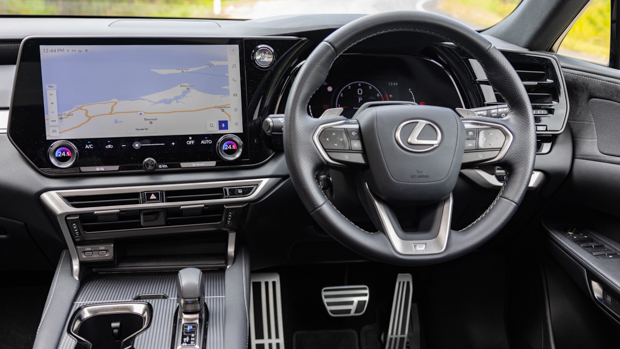
The only grumble is no carpeting for the lower door bins, especially as it exists inside the door pulls and centre console bin.
Despite the giant 14.0-inch infotainment screen, Lexus has thankfully stuck with beautiful knurled rotary knobs for climate, although you must prod a digital panel for fan speed.
You’ll not want for cup and phone storage – or USB ports – in the large, clean centre console, which looks superb with real aluminium trim.
Apple users can revel in the joy of wireless charging and wireless CarPlay, but Android users are stuck with plugging in. The digital driver’s display is clean but lacks meaningful customisation, while Lexus has – bemusing – tried to put too much information through the head-up display.
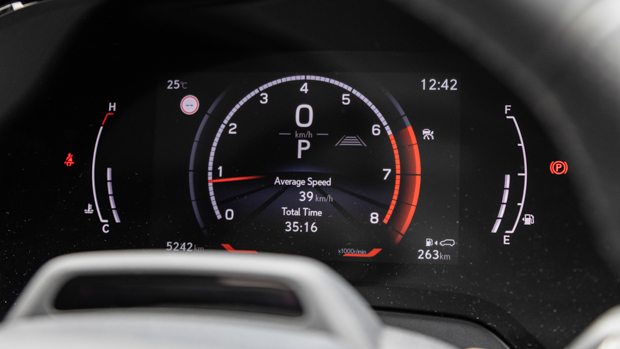
You can scroll through information using steering wheel touch pads, which are over-complex and rather unnecessary. Can HUD’s please stick to vitals like speed and navigation? Trying to access fuel economy on your windscreen via menus and over-sensitive touch pads gets infuriating.
Back seats are delightfully luxurious, with no loss of quality for rear door finish. Head, leg and toe room were ample for this six-footer, although the centre seat’s firm backrest (it doubles as a fold-down arm rest) isn’t ideal. Separate climate control back here’s a boon.
The back seats recline pleasingly far, although they don’t slide on runners, which would up the practicality. Despite the sweeping design of the RX’s rear roof, a small window behind the main one ensures it doesn’t feel claustrophobic.
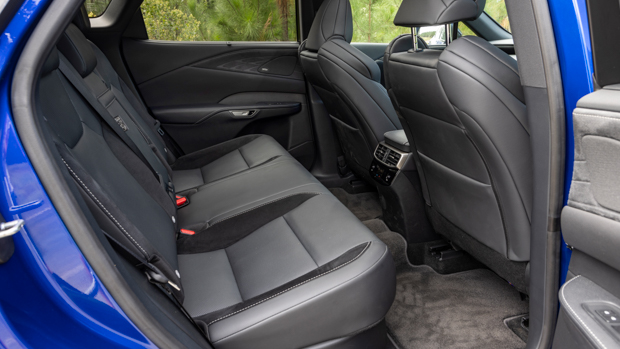
The long-stretching panoramic roof’s a worthy optional extra if those rear chairs are in constant use – it properly floods the cabin with light.
No third row of seats – standard or optional – will scrub this RX off some large SUV buyers’ list, but for those who don’t need them, at least your boot isn’t compromised.
Even so, it’s no whopper. There’s 612L on offer, or 1678L with the rear chairs 40:20:40 folded. Some seven-seat rivals offer more with five seats in place: a Volvo XC90 has 680L, Audi Q7 740L and Mazda CX-9 810L.
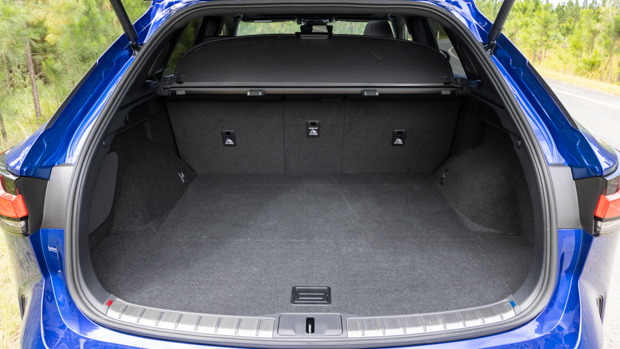
Access is via a power tailgate, which thankfully no longer opens like a glacier moves. It opens 3.3 seconds faster than the previous RX, and closes 1.6 seconds quicker. Time is money, after all.
The spare, by the way, is a space-saver.
It was awarded a maximum 5 stars with ANCAP on its February 2023 test. Scores across the board were strong:
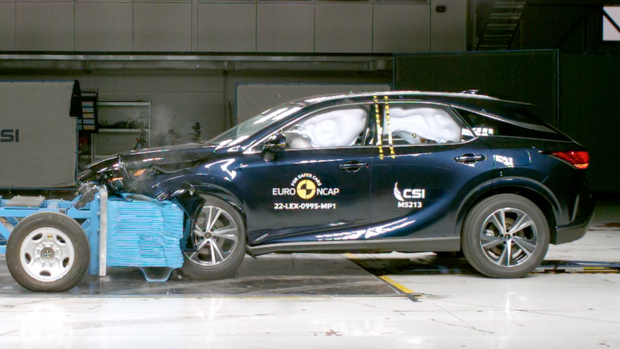
The RX 350 F Sport’s standard safety includes:
The 360-degree camera is razor sharp and incredibly useful in tight car parks, while the safety systems proved, for the most part, subtle in operation and control.
The only complaint was on highway drives when the driver was over-relying on lane-centring assist. On occasion it seemed to drop the ball, and the big RX would be on the dotted white lines – and exceptionally close to another vehicle – before pulling itself back into line.
Needless to say, it’s going to cost you more to run this petrol-only RX that its hybrid stablemates. No cheapie fuel allowed either. The turbo four-cylinder demands 95 RON or higher.
Fuel economy’s 8.7L/100km combined, but a guzzling 11.5L/100km in town. Our test, over some 700km of highway, town and country, scored an even 10L/100km.
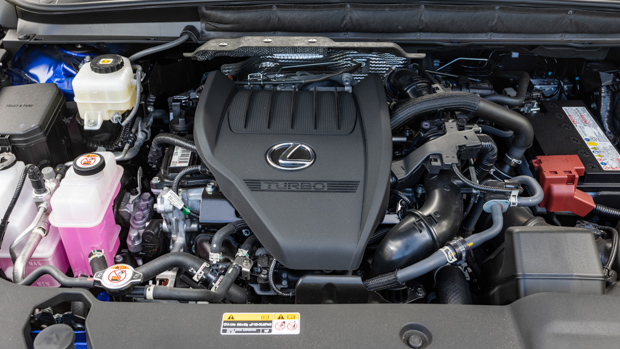
Par for the course for a 2000kg petrol SUV, but how can you not look at the hybrid version’s scores? The AWD has a combined 5.4L/100km, and cuts town drinking in half with 5.7L/100km. Opt for the FWD RX 350 hybrid and it gets better still: 5.0L/100km and 5.3L/100km respectively.
Lexus’ capped price servicing is every 12 months/15,000km. Not cheap at $695 per visit for the first five, equating to a wallet-hurting $3475 over that time or the first 75,000km. At least you get a guaranteed service loan car.
Warranty is average for the industry: five years/unlimited kilometres.
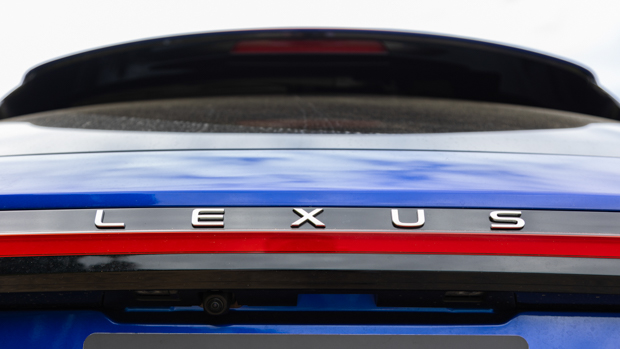
Something of a sweetener is the Lexus Encore ownership benefits program, with RX owners enjoying a three-year subscription.
This means a discount of five cents per litre at Ampol service stations, exclusive ticketing offers for events, valet parking discounts, and invites to restaurant experiences, golf and racetrack days.
The RX 350 F Sport must be seen as a niche offering in Lexus’ large SUV stable.
It looks the sporty part and feels incredibly special inside, but doesn’t properly distance itself from hybrid RX alternatives in terms of a sporty drive or meaningfully higher performance.
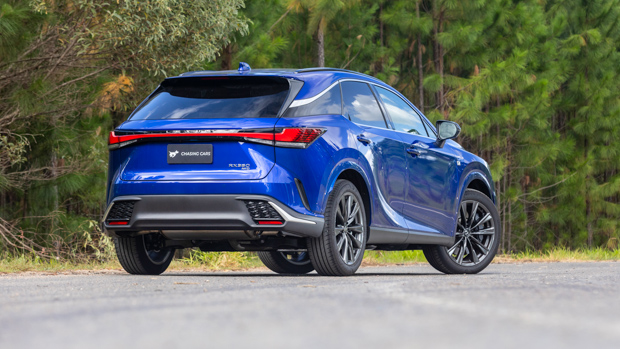
All RXs are standout large SUV offerings, and worthy foils to the ubiquitous German rivals – Lexus has given the RX a cabin and ride quality to properly compete here. Well, if you don’t need seven seats that is.
From the line-up, the entry-level RX 350h is better value and dramatically more economical than this RX 350 F Sport.
A Range-topping 273kW RX 500h F Sport Performance may push the budget, but is your pick for a more performance-orientated SUV, while returning economy this non-hybrid RX 350 could only dream about.
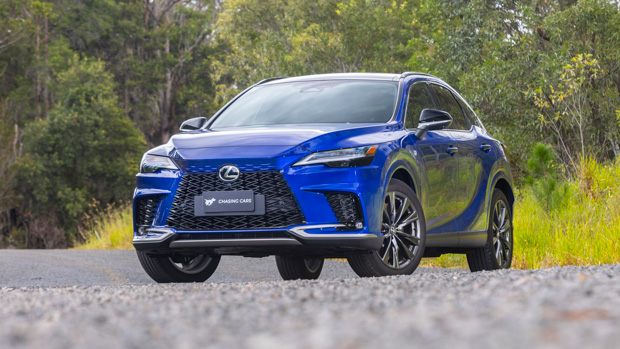
The RX 350 F Sport does an excellent job of maintaining ride comfort despite 21-inch wheels and sportier pretentions, no doubt helped by the very good adaptive suspension.
But it remains a car that is at its best when in luxury cruise mode: the typical usage of practically every Lexus RX.
Impressive as this non-hybrid RX is, for the vast, vast majority of buyers, hybrid RXs are where the smart money should go.
Variant tested F SPORT
Key specs (as tested)
About Chasing cars
Chasing Cars reviews are 100% independent.
Because we are powered by Budget Direct Insurance, we don’t receive advertising or sales revenue from car manufacturers.
We’re truly independent – giving you Australia’s best car reviews.
The estimate provided does not take into account your personal circumstances but is intended to give a general indication of the cost of insurance, in order to obtain a complete quote, please visit www.budgetdirect.com.au. Estimate includes 15%^ online discount.
^Conditions Apply
Budget Direct Insurance arranged by Auto & General Services Pty Ltd ACN 003 617 909(AGS) AFSL 241 411, for and on behalf of the insurer, Auto & General Insurance Company Limited(ABN 42 111 586 353, AFSL 285 571).Because we don’t know your financial needs, we can’t advise you if this insurance will suit you. You should consider your needs and the Product Disclosure Statement before making a decision to buy insurance. Terms and conditions apply.
Indicative quote based on assumptions including postcode , 40 year old male with no offences, licence suspensions or claims in the last 5 years, a NCD Rating 1 and no younger drivers listed. White car, driven up to 10,000kms a year, unfinanced, with no modifications, factory options and/or non-standard accessories, private use only and garaged at night.
^Online Discounts Terms & Conditions
1. Discounts apply to the premium paid for a new Budget Direct Gold Comprehensive Car Insurance, Third Party Property Only or Third Party Property, Fire & Theft Insurance policy initiated online on or after 29 March 2017. Discounts do not apply to optional Roadside Assistance.
2. Discounts do not apply to any renewal offer of insurance.
3. Discounts only apply to the insurance portion of the premium. Discounts are applied before government charges, taxes, levies and fees, including instalment processing fees (as applicable). The full extent of discounts may therefore be impacted.
4. We reserve the right to change the offer without notice.